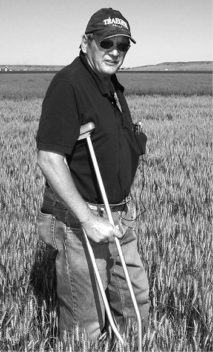No-Till Farmer
Get full access NOW to the most comprehensive, powerful and easy-to-use online resource for no-tillage practices. Just one good idea will pay for your subscription hundreds of times over.

A regular favorite at the National No-Tillage Conference, Dwayne Beck’s 2 decades of work at the Dakota Lakes Research Farm near Pierre, S.D., has revealed a depth of data to support his claim that, “In nature, tillage is a catastrophic event.”
From a recent half-day tour of the research facility, we’ve picked some of the most intriguing and thought-provoking points recently revealed on the farm.
Beck, who recently had hip replacement surgery, assures us he will be back “on his own two feet” when he presents to the 18th annual National No-Tillage Conference crowd in Des Moines next January.
Beck says the overriding theme at Dakota Lakes since Day No. 1 has been to mimic Mother Nature in terms of water balance, cycling of nutrients and harvesting of sunlight. All of the many ongoing projects at the 840-acre facility focus on at least one and usually all three of these principles. The farm has been totally no-till for 20 years.
Knowing the water-holding capacity of your soil is a must to make the best use of rainfall and snowmelt, whether you’re in a high or low precipitation area, Beck says.
“Around this area, we get about 18 inches a year,” he adds. “So, how can we manage that for more farm profit?
“Suppose you have the old eco-fallow rotation of wheat, corn (sorghum) and fallow. Corn quits using water about Oct. 1. That means nearly a 12-month interval between corn harvest and the recommended early September wheat…